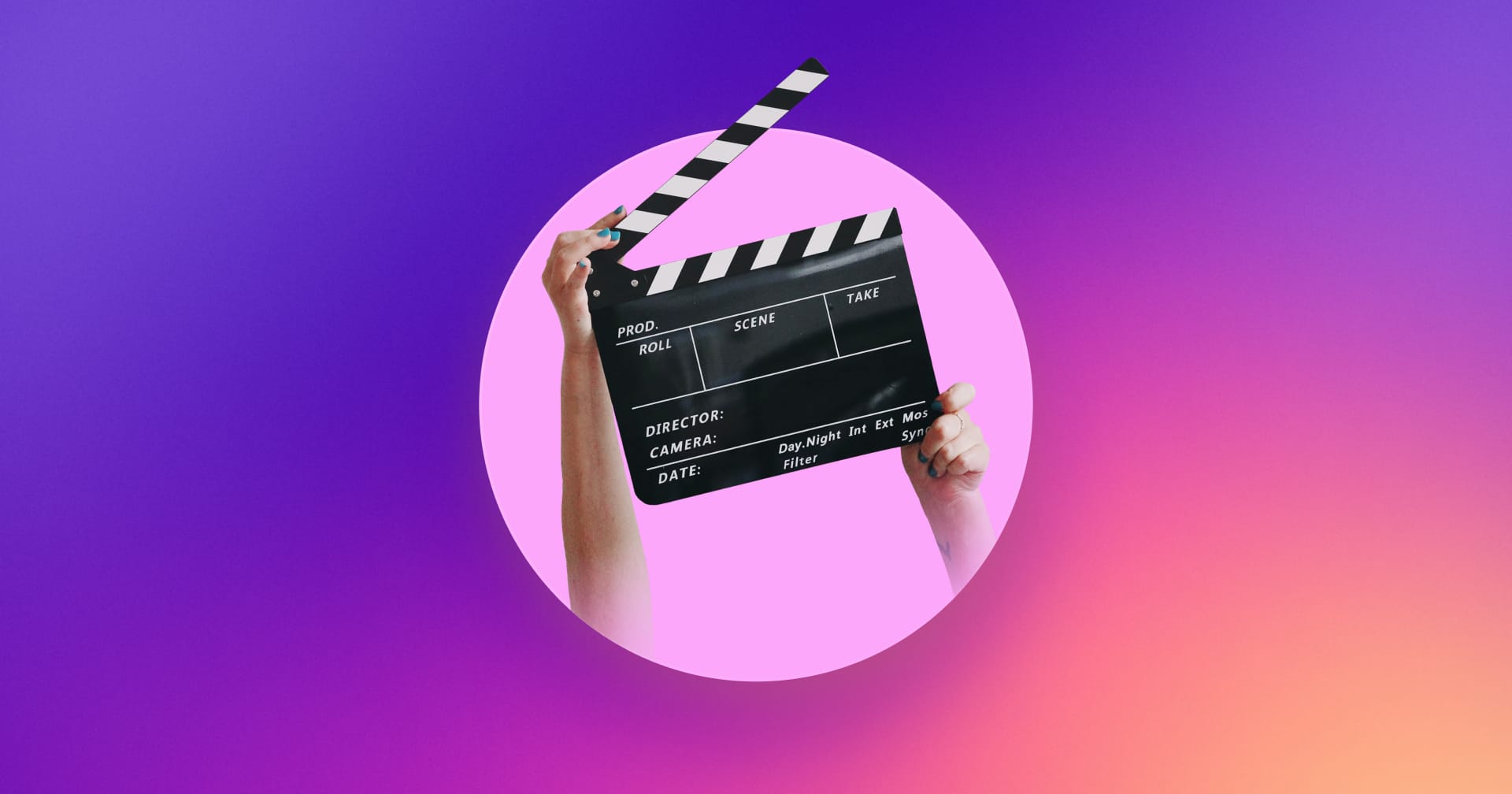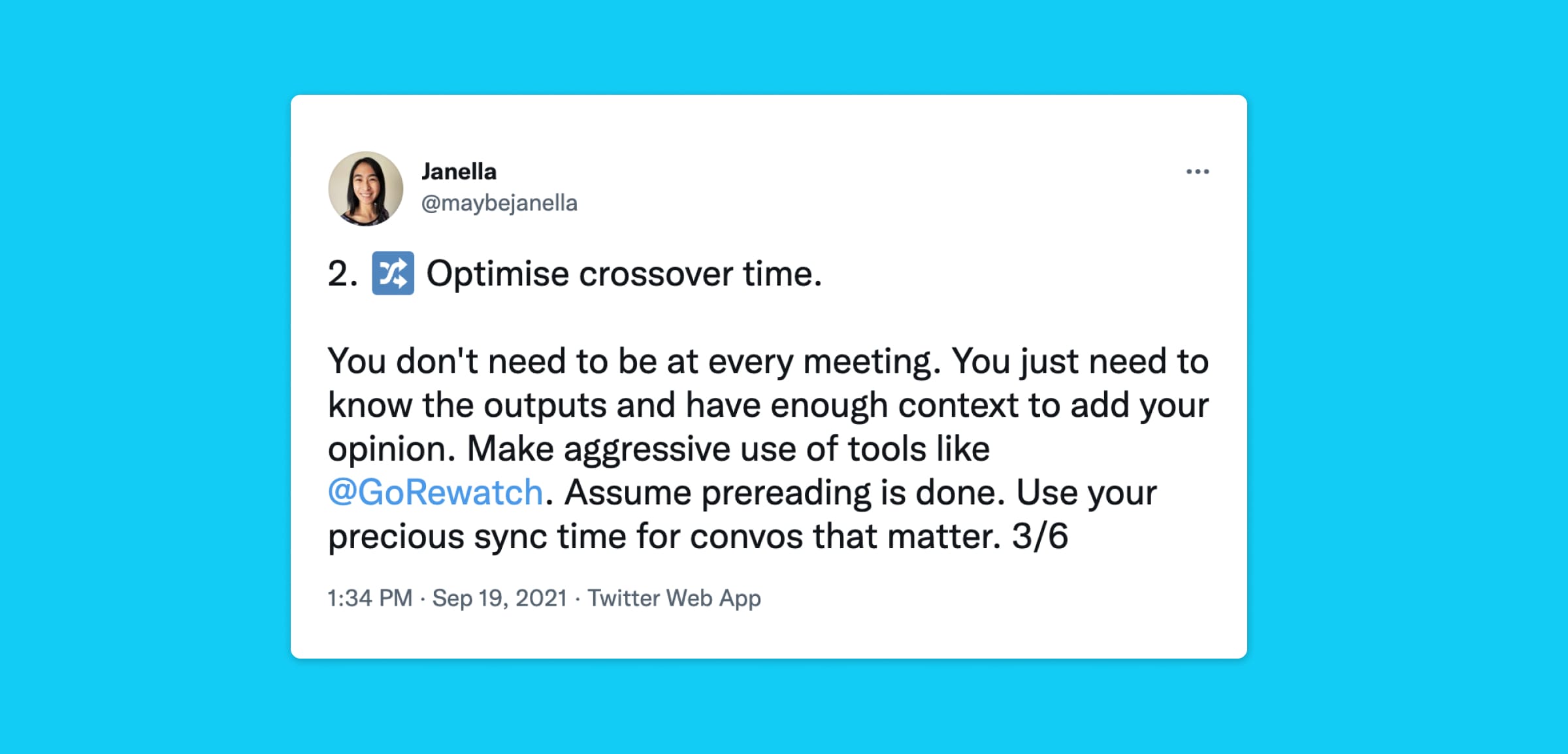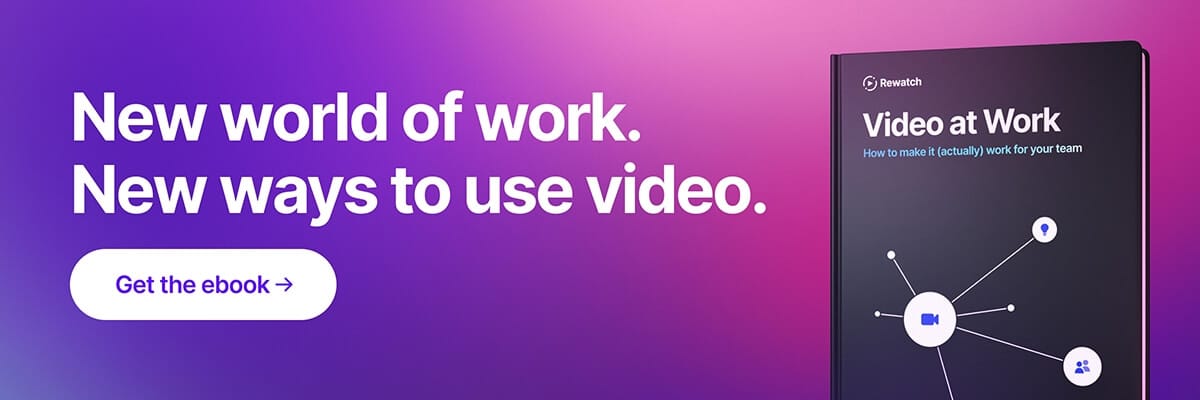Video is a mainstay in our work lives – but does it work for you?
The solution to Zoom fatigue isn't more video, it's reevaluating how we use video to make work better. Here’s how to turn video content into more meaningful interactions.
By Susannah Magers in

Being nearly two years into a global pandemic has certainly brought one issue into urgent focus: how we communicate at work isn’t, well, working. No matter how many tools we’ve added, a lingering gap persists between people in communication at work. But whether you’ve always worked remotely or are working in some evolving combination of a hybrid office-couch-coffee shop situation – our struggles with video are hardly new, especially when the solution to every problem seems to be yet another video meeting.
It’s not that there isn’t an appetite for incorporating video at work, it’s that we’re not making the most of the opportunities video creates for us to connect, work better, and enhance our experiences. We're just now starting to skim the surface of what's possible and what’s best when incorporating video into our workplaces to enable more productive (read: less mentally taxed, more focused) and meaningful teamwork.
The bottom line: Video hasn’t been successfully integrated into our workflows, and it’s time to explore not only why but what we can do to make video actually work, for work. The role of video at work is ripe with opportunities – here’s a sneak peek at what’s possible.
What’s going on with video at work? The good, the bad, and the “there’s hope”
There’s plenty of information on the science behind the benefits of video communication – and now, emerging research on the downsides of video meetings and why we find them so draining. It’s no wonder considering all the nonverbal communication we're doing. Yes, I’m referring to the enthusiastic head-nodders, responsive facial-expressers, and eager thumbs-uppers (I count myself among you).
Of course, video meetings aren’t inherently bad, but many of us are attending way more now (too many, really) because workplaces defaulted to them as a temporary strategy in early 2020. We’ve since accepted this strategy as the status quo – with video meetings as stand-ins for both scheduled and spontaneous in-person time.
One study on the effects of video meetings cited the number of calls jumped from 10 to 300 million within just weeks of the beginning of the COVID-19 pandemic. We leave these meetings feeling drained, experiencing anxiety about the work we had to push back to attend, or we don’t get the chance to contribute meaningfully as just one of several or dozens of faces on a call.
However, there are ways to adapt your use of video that builds on two of the widely touted ‘pros' of video communication.
1. Video can build stronger connections with your teammates.
It can take some more effort, but research shows video leads to higher levels of engagement and builds deeper emotional connection (and lessens WFH feelings of loneliness). While people often remark on the challenges of onboarding remotely, one of the upsides is getting to watch, and rewatch, recordings of important team meetings, product updates, new hire announcements, and project overviews, and have the time and space to synthesize those materials. I can take notes, write down questions, and flag any areas I’d like to follow up with someone personally on.
Conor Muirhead, Product Designer at Rewatch, previews upgrades to Rewatch video library search.
2. Video can help you learn more and retain more knowledge.
This subject deserves its own blog post (stay tuned!) but the implications for letting people absorb information on their own time, and in their preferred way, are vast in terms of retention and engagement. A study found that shorter videos (or videos that highlight the key takeaways) can improve learning outcomes and the likelihood that repeat usage will occur.
Rewatch Co-founder and CEO, Connor Sears, records a video overview of getting started with Rewatch channels.
In sum: We have the opportunity to be more intentional with how we share information, the kind of information we share, and be more flexible with how we expect our peers to internalize, respond to, and understand it through video.
What video can do for you and your team
So how do we strike the right balance between overloading our brains with real-time virtual interactions and consuming video content that adds instead of detracts from our wellbeing at work?
Here’s one key way: Think of your workplace videos as a knowledge library.
In a library model, resources are categorized, labeled, and searchable so you can go directly to what you need. This is particularly useful when your team moves quickly; trying to find that product update from two weeks ago can turn into an endless search (trust me).
With videos that are easy to access, your team can walk through new processes, add their insight and ideas, and show off what they’ve created or learned – all in less time than it takes to have a meeting. Over time, these videos form an invaluable institutional knowledge bank for everyone.
How video makes work better
The importance of building a connected team, and making sure everyone has what they need to be successful, is hyper-relevant in the era of remote and hybrid work. But what are the tangible ways video contributes to connecting us, removing silos, and improving how we get work done?
Meeting recordings and pre-recorded video messages are a form of asynchronous communication – which captures the context and clarity of being together without the time commitment.
With asynchronous video, you get more out of your meetings and potentially eliminate any that didn’t need to happen in the first place. Recorded meetings turn into resources for people who couldn’t join or only need to be made aware of specific decisions.
Janella, Software Engineer and Manager at Stedi, shares how to incorporate videos in place of real-time meetings, giving you only the context you need to reply and move work ahead:

Plus, people that don’t speak up in meetings aren’t necessarily disengaged; responding in the moment or in a larger group might be a participation barrier, so access to a recording of that same meeting might provide a more effective environment for them to respond.
Let’s make video work, for work
Remember: What we call “Zoom fatigue” is not necessarily caused by the tool itself but the way we use it. When we spend more time and energy on thinking about how video can help us do our jobs better – rather than trying to shoehorn everything we do into “one size fits all” video meetings – we help to close the gaps in our work lives between busy work and fulfillment, and fatigue and connection.
But that’s just the top of the video communication iceberg. Get more tactical tips and workplace communication insights in our ebook, Video at Work.
Loved this? Have a different perspective? We want to hear from you!
Recommended posts
Insights for the modern workplace
Get fresh ideas and practical tips to help your team work better, together. Delivered straight to your inbox.
